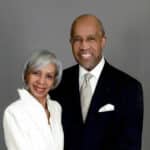Fear and misinformation are causing many Americans to make a potentially disastrous choice — retire early and take Social Security.
For those who have built up an adequate retirement nest egg, taking Social Security at 62, the earliest possible age, and receiving the lowest benefit level, is not a problem. But for those with inadequate savings, taking the smallest payout rather than waiting and receiving the maximum at 70, can result in an impoverished existence in old age.
According to the 2024 Protected Retirement Income Planning Study by the Alliance for Lifetime Income (ALI), half of Americans ages 61 to 65 have retired and started receiving Social Security payments. And half of these “Peak 65 Zone” Americans have less than $100,000 in assets, while 28% are still providing financial support to adult-age children and extended family members.
A group of retirement experts examined this ill-advised retirement course during a panel discussion at ALI’s 2024 Protected Retirement Summit held in Washington D.C. on October 9. The session was titled “The Cost of Fear: How Poor Understanding About Social Security and Protected Lifetime Income Undermines Retirement Security.”
“For many it is a fear that there won’t be Social Security available if they don’t tap it now, or they won’t be able to enjoy it because they won’t live long enough,” said panelist Ramsey Alwin, president and CEO of the National Council on Aging. “They want to make sure they get that benefit while it’s still available to them. But what ends up happening is they come back seeking support when those dollars are not enough, because for so many, Social Security is the only source of retirement income.”
No Progress on Fixing Social Security
Social Security isn’t in danger of going away, but as panelist Shai Akabas noted, in about 10 years the Old-Age and Survivors Insurance Fund, which pays out old age and surviving spouse benefits, will run out. At that point, Social Security will be able to pay out only about 80% of its benefits, a scenario he blamed on “highly irresponsible” policymakers in Washington who have so far failed to address the problem.
“Many of them realize that, but we have not found the political will yet to tackle the issues, so there’s not a whole lot of near-term hope for action,” said Akabas, executive director of the Economic Policy Program of the Bipartisan Policy Center.
Panelist Jason Fichtner, executive director of the Retirement Income Institute of the Alliance for Retirement Income, said the Social Security Administration bears some of the blame for Americans retiring too early. He knows this because he served as deputy commissioner of the agency about 10 years ago when it used a “break-even analysis” to advise potential recipients.
“The number one question Social Security receives is, ‘When should I retire?’ and what’s happening is people are walking at age 62 and asking this question,” he said.
Under the break-even analysis, SSA would inform them that by taking Social Security earlier, they would get a lower monthly payment but would receive more total money until a break-even point 14 years in the future.
“They never told them that if you live past 76, you’ll then be behind the rest of your life,” Fichtner said. “We got rid of the break-even age and that analysis.”
The Cost of Fear
But many people are still making the ill-advised decision to retire at 62 and take the lowest Social Security benefit, noted Fichtner. “And that is the cost of fear — the fear that they’re going to lose Social Security, that it’s going to go bankrupt. The misinformation … that fear was creating an environment where people then do a decision causing them a disservice and lower financial security.”
Panelist David John, senior strategic policy advisor with the AARP Public Policy Institute, said he was surprised to learn that people were taking Social Security early because they’re worried about the trust fund. At a recent HR conference he attended, employers said many employees were making that decision. “I was shocked by the number of people who actually put up their hands and said yes.”
Many people retire too early because they lack expert financial guidance, and after they retire, they don’t know how to use the assets they have, John said.
“Having saved for your entire lifetime, (the retiring worker is told) ‘Here’s all your money. You can deal with it. Have a great life.’ And in that case, you’re almost guaranteed that a significant number of people are going to say, ‘Hey, I can spend 10% a year for the next 30 years,’ which is mathematically impossible,” John said.
Others will spend too little in retirement because they fear experiencing a medical emergency that could drain their resources. “It’s a problem that has to be approached recognizing that people have emotions, and a significant majority of people don’t make decisions based on dollars and cents,” he said.
Many people avoid getting professional financial guidance because dealing with a financial advisor is intimidating and uncomfortable for them, John added.
He encountered a similar attitude when he worked in the credit union industry. When he asked customers why they used a credit union, they explained that banks were intimidating. “I see … luxurious settings, people looking prosperous,” they told him, adding, “Well, this certainly isn’t for me. I don’t understand what they say. … So, I turn around and walk out the door and I go to my credit union instead.”
Another problem, John said, is that there aren’t enough financial advisors “who can sit down with you in the traditional way.” The solution, he said, very likely will have to include advisors working online and perhaps some guidance provided through artificial intelligence. “But again, it has to be something you can understand. And it has to be something that the individual feels that is in their interest,” John said.
“You have to be comfortable, you have to be accessible, and you have to provide guidance that they can walk out of the room and say, ‘I understand what’s being done.’”
— David John, AARP Policy Institute
His advice to financial advisors: “You have to be comfortable, you have to be accessible, and you have to provide guidance that they can walk out of the room and say, ‘I understand what’s being done.’”
Planning Retirement With a ‘Longevity Portfolio’
Alwyn said some people have to take Social Security early because of the physical nature of their work. As the daughter of a lobster fisherman and restaurant worker, she’s seen it firsthand.
“Growing up in a small town in Maine, I saw even if you work hard, play by the rules, save, it’s still not enough in old age. We get put out to pasture.”
Alwyn said retirement decisions should include an assessment of an individual’s “longevity portfolio.” That concept takes into account not just financial resources, but also includes a person’s skills and viability to work. “For so many claiming early, it’s about the nature of their job being too backbreaking to continue,” she said. “It’s tough when you’re a lobster fisherman or a restaurant worker to think about doing that into your 70s and beyond, even if you have to.”
Another factor weighed in the longevity portfolio is the support network a retired individual can rely on, Alwyn said. “It’s your connections with your loved ones, your close, deep ties. But it’s also your vast circles of support and your acquaintances that can help you smooth out different life transitions. And it’s your community connections, the community-based organizations where you can serve, where you can engage, where you can socialize. Those are also a part of that portfolio of assets that need to be cultivated and nurtured, just like your financial assets.”
Searching for Solutions
So, what’s the solution to premature retirement?
Fixing Social Security is perhaps the most obvious — and most difficult. Akabas, of the Bipartsan Policy Institute, said there is hope.
“I think there may be some in the new Congress when there is an alignment,” he said. “And what we need is policymakers who are interested in finding the solutions that are ultimately going to be needed. Because largely, to date, we’ve been riding on talking points where one party is making a pledge not to cut benefits and the other party is making a pledge not to raise taxes, and there’s no room in between to actually fix the problem.”
Panelists agreed a big part of the solution is putting in place retirement savings plans early in worker’s careers to ensure they have enough when they retire. Creating effective default savings options is key, several said. Fichtner, who is a longtime advocate of annuities for retirement savings, has hailed the recent uptick in 401(k) plans that include an annuity option. More can be done to get workers to try annuities, he said.
Additional Reading: This Is Not Your Father’s Annuity Industry
“What if there were two or three defaults, but one … could be a trial annuity, which puts people in at some drawdown level,” Fichtner said. “And they have two years; you’re going to get a check every month for the next two years. … If you like it, just continue for the rest of your life. If you don’t, you can turn it off and get the rest of your principal down,” he said. “The idea is to have some default in there automatically that gets over the inertia of basically paralyzing fear.”
To increase the popularity of retirement savings, panel moderator Jean Chatzky suggested dividing 401(k) accounts into two parts: one for the money that the employee contributes, which would go into safe investments; and the employer’s match, which would be devoted to higher-yield – and riskier – investments.
“It would, I think, get at that idea of loss aversion,” Chatzky said. If the high-yield fund decreased, she said, the employee’s reaction likely would be, “I’m not losing my money, I’m losing the employer’s money, which maybe I never quite had anyway.”
Akabas agreed that working people need well-crafted savings options that put them on the path to a secure retirement. “A lot of it needs to be on a glide path for them, because people are not generally financial experts and don’t know how to put all these pieces together” he said.
The help could include financial advice or an optimized default retirement savings plan that includes a guaranteed lifetime income option, he said.
“But the right path cannot be that you hand people a pot of money and say, ‘Go figure this out,’” Akabas said. “And that’s largely what people are operating on today.”
In a four-decade career in journalism, Ed Prince has served as an editor with many of New Jersey’s leading newspapers, including the Star-Ledger, Asbury Park Press and Home News.







